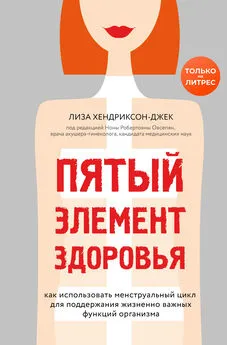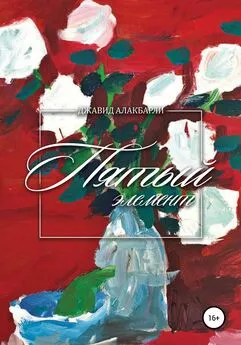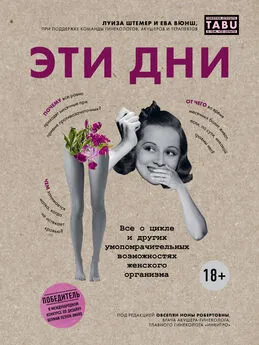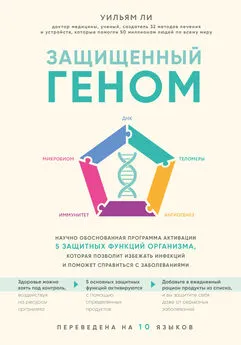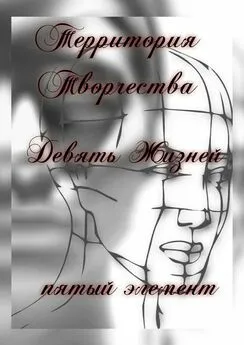Лиза Хендриксон-Джек - Пятый элемент здоровья. Как использовать менструальный цикл для поддержания жизненно важных функций организма
- Название:Пятый элемент здоровья. Как использовать менструальный цикл для поддержания жизненно важных функций организма
- Автор:
- Жанр:
- Издательство:Литагент 5 редакция
- Год:2020
- Город:Москва
- ISBN:978-5-04-104425-1
- Рейтинг:
- Избранное:Добавить в избранное
-
Отзывы:
-
Ваша оценка:
Лиза Хендриксон-Джек - Пятый элемент здоровья. Как использовать менструальный цикл для поддержания жизненно важных функций организма краткое содержание
«Почти» – потому что у женщин есть пятый показатель здоровья, на который, к сожалению, все еще мало кто обращает внимание, – это менструальный цикл. Короткий или длинный, регулярный или непредсказуемый – цикл может быть очень разным, и каждый его параметр, каждое изменение служат индикатором той или иной проблемы в организме. Планируете вы беременность или нет, овуляция имеет значение для поддержания здоровья.
Автор этой книги расскажет, что именно влияет на состояние менструального цикла, и научит вас составлять его график для максимально точного и удобного отслеживания различных изменений и контроля здоровья.
Пятый элемент здоровья. Как использовать менструальный цикл для поддержания жизненно важных функций организма - читать онлайн бесплатно ознакомительный отрывок
Интервал:
Закладка:
39. Bodnar, Lisa M., Hyagriv N. Simhan, Robert W. Powers, Michael P. Frank, Emily Cooperstein, and James M. Roberts. “High prevalence of vitamin D insufficiency in black and white pregnant women residing in the northern United States and their neonates.” The Journal of Nutrition 137, no. 2 (2007): 447-452; Richard, Aline, Sabine Rohrmann, and Katharina C. Quack Lötscher. “Prevalence of Vitamin D deficiency and its associations with skin color in pregnant women in the first trimester in a sample from Switzerland.” Nutrients 9, no. 3 (2017): 260–271.
40. Nair, Rathish, and Arun Maseeh. “Vitamin D: the ‘sunshine’ vitamin.” Journal of Pharmacology & Pharmacotherapeutics 3, no. 2 (2012): 1–18; Libon, Florence, Justine Courtois, Caroline Le Goff, Pierre Lukas, Neus Fabregat-Cabello, Laurence Seidel, Etienne Cavalier, and Arjen F. Nikkels. “Sunscreens block cutaneous vitamin D production with only a minimal effect on circulating 25-hydroxyvitamin D.” Archives of Osteoporosis 12, no. 1 (2017): 66; Matsuoka, L.Y., L. Ide, J. Wortsman, J.A. MacLaughlin, and M.F. Holick. “Sunscreens suppress cutaneous vitamin D 3synthesis.” The Journal of Clinical Endocrinology and Metabolism 64, no. 6 (1987): 1165–1168; Sambandan, Divya R., and Desiree Ratner. “Sunscreens: an overview and update.” Journal of the American Academy of Dermatology 64, no. 4 (2011): 748–758; Kullavanijaya, Prisana, and Henry W. Lim. “Photoprotection.” Journal of the American Academy of Dermatology 52, no. 6 (2005): 937–958; Faurschou, A., D.M. Beyer, Anne Schmedes, M.K. Bogh, P.A. Philipsen, and H.C. Wulf. “The relation between sunscreen layer thickness and vitamin D production after ultraviolet B exposure: a randomized clinical trial.” British Journal of Dermatology 167, no. 2 (2012): 391–395; Norval, M., and Hans Chr Wulf. “Does chronic sunscreen use reduce vitamin D production to insufficient levels?” British Journal of Dermatology 161, no. 4 (2009): 732–736.
41. Schmid, Alexandra, and Barbara Walther. “Natural vitamin D content in animal products.” Advances in Nutrition: An International Review Journal 4, no. 4 (2013): 453–462.
42. McKenna, M.J., and R. Freaney. “Secondary hyperparathyroidism in the elderly: means to defining hypovitaminosis D.” Osteoporosis International 8, no. 8 (1998): S003–S006; Gómez-Alonso, Carlos, Manuel L. Naves-Díaz, Jose L. Fernández– Martín, Jose B. Díaz-López, Maria T. Fernández-Coto, and Jorge B. Cannata-Andía. “Vitamin D status and secondary hyperparathyroidism: the importance of 25-hydroxyvitamin D cut-off levels.” Kidney International 63 (2003): S44–S48; Holick, Michael F. “Vitamin D deficiency.” New England Journal of Medicine 357, no. 3 (2007): 266–281; Souberbielle, Jean– Claude, Jean-Jacques Body, Joan M. Lappe, Mario Plebani, Yehuda Shoenfeld, Thomas J. Wang, Heike A. Bischoff-Ferrari et al. “Vitamin D and musculoskeletal health, cardiovascular disease, autoimmunity and cancer: recommendations for clinical practice.” Autoimmunity Reviews 9, no. 11 (2010): 709–715; Vieth, Reinhold. “Why the optimal requirement for Vitamin D3 is probably much higher than what is officially recommended for adults.” The Journal of Steroid Biochemistry and Molecular Biology 89 (2004): 575–579.
43. Daniele, C., J. Thompson Coon, M.H. Pittler, and E. Ernst. “Vitex agnus castus: a systematic review of adverse events, 2005.” Drug Safety 28, no. 4: 319–332.
44. Там же; Milewicz, A., E. Gejdel, H. Sworen, K. Sienkiewicz, J. Jedrzejak, T. Teucher, and H. Schmitz. “Vitex agnus castus extract in the treatment of luteal phase defects due to latent hyperprolactinaemia. 1. Results of a randomized placebo– controlled double blind study.” Arzneimittel Forschung 43 (1993): G-752.
45. Jang, Su Hee, Dong Il Kim, and Min-Sun Choi. “Effects and treatment methods of acupuncture and herbal medicine for premenstrual syndrome/premenstrual dysphoric disorder: systematic review.” BMC Complementary and Alternative Medicine 14, no. 1 (2014): 1–13; Cerqueira, Raphael O., Benicio N. Frey, Emilie Leclerc, and Elisa Brietzke. “Vitex agnus castus for premenstrual syndrome and premenstrual dysphoric disorder: a systematic review.” Archives of Women’s Mental Health 20, no. 6 (2017): 713–719; van Die, M. Diana, Henry G. Burger, Helena J. Teede, and Kerry M. Bone. “Vitex agnus-castus extracts for female reproductive disorders: a systematic review of clinical trials.” Planta Medica 79, no. 07 (2013): 562–575; Dante, Giulia, and Fabio Facchinetti. “Herbal treatments for alleviating premenstrual symptoms: a systematic review.” Journal of Psychosomatic Obstetrics & Gynecology 32, no. 1 (2011): 42–51; Schellenberg, Rftsg. “Treatment for the premenstrual syndrome with agnus castus fruit extract: prospective, randomised, placebo controlled study.” The BMJ 322, no. 7279 (2001): 134–137.
Глава 16
1. Niwattisaiwong, Soamsiri, Kenneth D. Burman, and Melissa Li-Ng. “Iodine deficiency: clinical implications.” Cleveland Clinic Journal of Medicine 84, no. 3 (2017): 236–244; Dillon, J.C., and J. Milliez. “Reproductive failure in women living in iodine deficient areas of West Africa.” BJOG: An International Journal of Obstetrics & Gynaecology 107, no. 5 (2000): 631–636; Delange, F. “Iodine deficiency as a cause of brain damage.” Postgraduate Medical Journal 77, no. 906 (2001): 217–220; Das, S.C., A.Z. Mohammed, S. Al-Hassan, A.A. Otokwula, and U.P. Isichei. “Effect of environmental iodine deficiency (EID) on foetal growth in Nigeria.” Indian Journal of Medical Research 124, no. 5 (2006): 535–544; Cobra, Claudine, Kusnandi Rusmil, Diet Rustama, Susi S. Suwardi, Dewi Permaesih, Sri Martuti, and Richard D. Semba. “Infant survival is improved by oral iodine supplementation.” The Journal of Nutrition 127, no. 4 (1997): 574–578; Pharoah, P.O.D., I.H. Buttfield, and B.S. Hetzel. “Neurological damage to the fetus resulting from severe iodine deficiency during pregnancy.” International Journal of Epidemiology 41, no. 3 (2012): 589–592; Zimmermann, Michael B. “Iodine deficiency.” Endocrine Reviews 30, no. 4 (2009): 376–408; Caldwell, Kathleen L., Yi Pan, Mary E. Mortensen, Amir Makhmudov, Lori Merrill, and John Moye. “Iodine status in pregnant women in the National Children’s Study and in US women (15–44 years), National Health and Nutrition Examination Survey 2005–2010.” Thyroid 23, no. 8 (2013): 927–937.
2. Pharoah, P.O.D., I.H. Buttfield, and B.S. Hetzel. “Neurological damage to the fetus resulting from severe iodine deficiency during pregnancy.” International Journal of Epidemiology 41, no. 3 (2012): 589–592; Pharoah, P.O.D., and K. J. Connolly. “A Controlled Trial of lodinated Oil for the Prevention of Endemic Cretinism: A Long-Term Follow-Up.” International Journal of Epidemiology 16, no. 1 (1987): 68–73; Zimmermann, Michael B., Pieter L. Jooste, and Chandrakant S. Pandav. “Iodine-deficiency disorders.” The Lancet 372, no. 9645 (2008): 1251–1262; Halpern, Jean– Pierre, Steven C. Boyages, Glenden F. Maberly, John K. Collins, Creswell J. Eastman, and John GL Morris. “The neurology of endemic cretinism: a study of two endemias.” Brain 114, no. 2 (1991): 825–841; Caldwell, Kathleen L., Yi Pan, Mary E. Mortensen, Amir Makhmudov, Lori Merrill, and John Moye. “Iodine status in pregnant women in the National Children’s Study and in US women (15–44 years), National Health and Nutrition Examination Survey 2005–2010.” Thyroid 23, no. 8 (2013): 927–937.
3. Caldwell, Kathleen L., Yi Pan, Mary E. Mortensen, Amir Makhmudov, Lori Merrill, and John Moye. “Iodine status in pregnant women in the National Children’s Study and in US women (15–44 years), National Health and Nutrition Examination Survey 2005–2010.” Thyroid 23, no. 8 (2013): 927–937.
4. Abraham, Guy E., Jorge D. Flechas, and J. C. Hakala. “Orthoiodosupplementation: iodine sufficiency of the whole human body.” The Original Internist 9, no. 4 (2002): 30–41; Abraham, Guy E., Roxane C. Handal, and J.C. Hakala. “A simplified procedure for the measurement of urine iodide levels by the ion-selective electrode assay in a clinical setting.” The Original Internist 1 (2006): 125–135.
5. Aaseth, Jan, Harald Frey, Eystein Glattre, Gunnar Norheim, Jetmund Ringstad, and Yngvar Thomassen. “Selenium concentrations in the human thyroid gland.” Biological Trace Element Research 24, no. 2–3 (1990): 147–152; Schomburg, Lutz, and Josef Köhrle. “On the importance of selenium and iodine metabolism for thyroid hormone biosynthesis and human health.” Molecular Nutrition & Food Research 52, no. 11 (2008): 1235–1246; Brownstein, David. (2008). Iodine: Why You Need It, Why You Can’t Live Without It. Arden, NC: Medical Alternatives Press.
6. Arthur, John R., Fergus Nicol, and Geoffery J. Beckett. “Selenium deficiency, thyroid hormone metabolism, and thyroid hormone deiodinases.” The American Journal of Clinical Nutrition 57, no. 2 (1993): 236S–239S; Drutel, Anne, Françoise Archambeaud, and Philippe Caron. “Selenium and the thyroid gland: more good news for clinicians.” Clinical Endocrinology 78, no. 2 (2013): 155–164; Kohrle, J., F. Jakob, Bernard Contempre, and Jacques Emile Dumont. “Selenium, the thyroid, and the endocrine system.” Endocrine Reviews 26, no. 7 (2005): 944–984.
7. Cooper, Glinda S., and Berrit C. Stroehla. “The epidemiology of autoimmune diseases.” Autoimmunity Reviews 2, no. 3 (2003): 119–125.
8. Fröhlich, Eleonore, and Richard Wahl. “Thyroid autoimmunity: role of anti-thyroid antibodies in thyroid and extra– thyroidal diseases.” Frontiers in Immunology 8 (2017) 521: 1–16.
9. Turker, Omer, Kamil Kumanlioglu, Inanc Karapolat, and Ismail Dogan. “Selenium treatment in autoimmune thyroiditis: 9-month follow-up with variable doses.” Journal of Endocrinology 190, no. 1 (2006): 151–156; Gärtner, Roland, Barbara C.H. Gasnier, Johannes W. Dietrich, Bjarne Krebs, and Matthias W.A. Angstwurm. “Selenium supplementation in patients with autoimmune thyroiditis decreases thyroid peroxidase antibodies concentrations.” The Journal of Clinical Endocrinology & Metabolism 87, no. 4 (2002): 1687–1691; Fan, Yaofu, Shuhang Xu, Huifeng Zhang, Wen Cao, Kun Wang, Guofang Chen, Hongjie Di, Meng Cao, and Chao Liu. “Selenium supplementation for autoimmune thyroiditis: a systematic review and meta-analysis.” International Journal of Endocrinology 2014 (2014): 1–8; Xu, Jian, Xue-Feng Yang, Huai-Lan Guo, Xiao-Hui Hou, Lie-Gang Liu, and Xiu-Fa Sun. “Selenium supplement alleviated the toxic effects of excessive iodine in mice.” Biological Trace Element Research 111, no. 1–3 (2006): 229–238; Drutel, Anne, Françoise Archambeaud, and Philippe Caron. “Selenium and the thyroid gland: more good news for clinicians.” Clinical Endocrinology 78, no. 2 (2013): 155–164.
10. Mahmoodianfard, Salma, Mohammadreza Vafa, Fatemeh Golgiri, Mohsen Khoshniat, Mahmoodreza Gohari, Zahra Solati, and Mahmood Djalali. “Effects of zinc and selenium supplementation on thyroid function in overweight and obese hypothyroid female patients: a randomized double-blind controlled trial.” Journal of the American College of Nutrition 34, no. 5 (2015): 391–399.
11. Nishiyama, Soroku, Yoshiko Futagoishi-Suginohara, Makoto Matsukura, Toshiro Nakamura, Akimasa Higashi, Makoto Shinohara, and Ichiro Matsuda. “Zinc supplementation alters thyroid hormone metabolism in disabled patients with zinc deficiency.” Journal of the American College of Nutrition 13, no. 1 (1994): 62–67; Ruz, Manuel, Juana Codoceo, Jose Galgani, Luis Muñoz, Nuri Gras, Santiago Muzzo, Laura Leiva, and Cleofina Bosco. “Single and multiple selenium-zinc-iodine deficiencies affect rat thyroid metabolism and ultrastructure.” The Journal of Nutrition 129, no. 1 (1999): 174–180.
Читать дальшеИнтервал:
Закладка:
